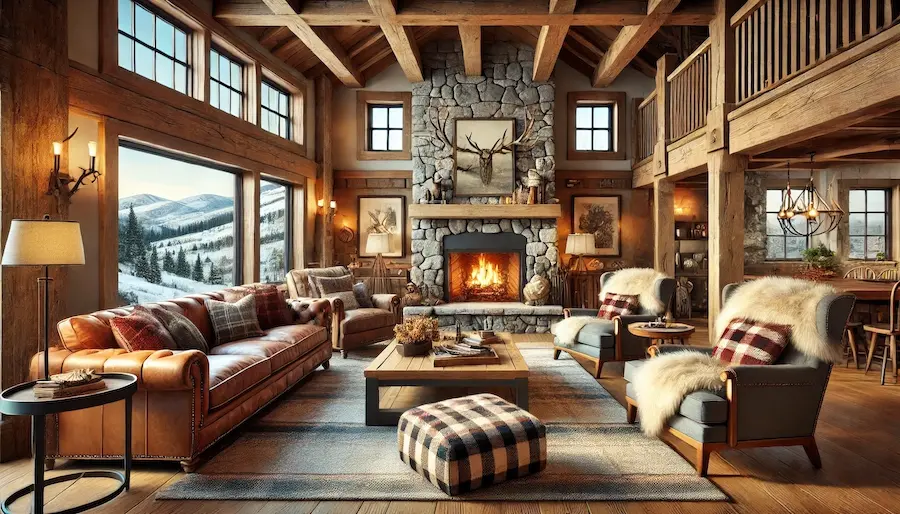Designing a mountain cabin living room involves creating a cozy and inviting space that reflects the rustic charm of its natural surroundings. This style emphasizes the use of natural materials, warm color palettes, and comfortable furnishings to establish a retreat-like atmosphere.
History and Origins of Mountain Cabin Design
Mountain cabin design has its roots in the traditional log cabins built by early settlers in mountainous regions. These structures were constructed using readily available materials like timber and stone, focusing on functionality and durability to withstand harsh climates. Over time, this pragmatic approach evolved into a distinct architectural style that celebrates simplicity, craftsmanship, and a deep connection to nature.
Key Features of a Mountain Cabin Living Room
- Natural Materials: Incorporate elements such as exposed wooden beams, stone fireplaces, and hardwood floors to bring the essence of the outdoors inside. These materials add texture and warmth, creating a grounded and earthy ambiance.
- Warm Color Palette: Utilize earthy tones like browns, greens, and deep reds to evoke the natural landscape. These colors contribute to a warm and inviting atmosphere, enhancing the cozy feel of the space.
- Comfortable Furnishings: Opt for plush sofas and chairs upholstered in durable fabrics like leather or wool. Layering with soft throws and cushions adds to the comfort and invites relaxation.
- Fireplace as a Focal Point: A stone or wood-burning fireplace serves as the heart of the living room, providing warmth and a gathering spot for family and friends. It also adds a rustic charm that is quintessential to mountain cabin interiors.
- Large Windows: Incorporate expansive windows to maximize natural light and offer unobstructed views of the surrounding landscape. This design choice blurs the line between indoors and outdoors, enhancing the connection to nature.
Applications of Mountain Cabin Design
- Open Floor Plans: Create a sense of spaciousness by integrating the living room with adjacent areas like the kitchen and dining room. This layout promotes easy flow and fosters a communal atmosphere.
- Decorative Elements: Incorporate rustic accessories such as antler chandeliers, handcrafted wooden furniture, and nature-inspired artwork to add character and personalize the space.
- Textural Variety: Mix different textures—like rough-hewn wood, smooth leather, and soft textiles—to add depth and visual interest to the room.
Considerations When Designing a Mountain Cabin Living Room
- Integration with Nature: Ensure that the design complements the natural surroundings, using materials and colors that harmonize with the landscape.
- Functionality: While aesthetics are important, prioritize practical aspects such as durable materials and efficient layouts to accommodate the lifestyle associated with mountain living.
- Personalization: Incorporate personal touches and heirlooms to make the space uniquely yours, reflecting your individual taste and experiences.
Conclusion
A mountain cabin living room embodies the perfect blend of rustic charm and modern comfort, offering a serene retreat that resonates with the beauty of its natural surroundings. By focusing on natural materials, warm colors, and cozy furnishings, you can create a space that is both inviting and reflective of the timeless appeal of mountain cabin design.
